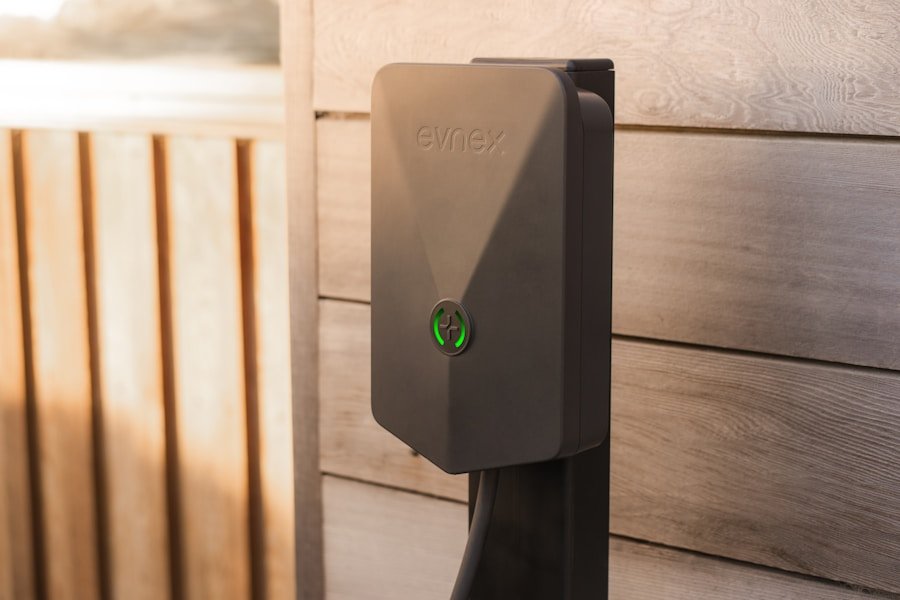GPS devices used for camping can be limited by signal interference in remote areas. In wilderness areas with dense tree cover or deep canyons, GPS signals can be obstructed, resulting in inaccurate location readings. This can be particularly problematic when navigating unfamiliar terrain, as hikers and campers may rely on a device that cannot provide accurate location information.
Furthermore, signal interference can cause delays in receiving updated mapping data, hindering navigation efforts. This limitation emphasizes the importance of having alternative navigation tools and skills when venturing into remote areas for camping. In remote areas, GPS devices may struggle to maintain a strong and consistent signal due to natural obstacles such as mountains, forests, and canyons.
This can result in unreliable location readings and mapping data, making it difficult for campers to accurately determine their position and plan their routes. Consequently, campers should be prepared to rely on traditional navigation methods, such as map and compass, and develop their orienteering skills to ensure effective navigation in areas where GPS signals may be compromised.
Key Takeaways
- Signal interference in remote areas can cause GPS devices to lose connection and accuracy, making it difficult to rely on them for navigation.
- Limited battery life can be a major limitation for GPS devices, especially on longer camping trips where access to power sources may be limited.
- Inaccurate mapping data can lead to confusion and potential danger, as GPS devices may not accurately reflect the terrain or landmarks in remote camping areas.
- Dependence on satellite connectivity means that GPS devices may not work well in areas with obstructed views of the sky, such as dense forests or deep canyons.
- Lack of terrain details in GPS mapping can make it challenging to navigate through rugged or unfamiliar landscapes, increasing the risk of getting lost.
Limited Battery Life
Battery Life Concerns in Remote Areas
While many modern GPS devices are equipped with rechargeable batteries, the power supply can still be a concern when camping in remote areas for an extended period of time. Without access to electricity, campers may find it challenging to keep their GPS devices charged, especially if they are relying on them for navigation throughout their trip.
The Importance of Backup Power Sources
This limitation underscores the importance of carrying backup power sources such as portable solar chargers or extra batteries to ensure that GPS devices remain operational during camping trips. In remote camping areas, access to electricity may be limited or non-existent, making it difficult for campers to recharge their GPS devices.
Mitigating the Limitation
To mitigate this limitation, campers should consider using power-saving features on their GPS devices and carrying backup power sources to ensure that they can rely on their devices throughout their trip. Additionally, campers should familiarize themselves with the estimated battery life of their GPS devices and plan accordingly to ensure that they have enough power to last the duration of their camping trip.
Inaccurate Mapping Data
In addition to signal interference and limited battery life, another limitation of GPS devices for camping is the potential for inaccurate mapping data. While GPS devices are designed to provide accurate location information, they may not always have the most up-to-date mapping data, especially in remote or less-traveled areas. This can lead to discrepancies between the actual terrain and the information displayed on the GPS device, potentially causing confusion and navigation errors for campers.
To address this limitation, campers should supplement their GPS devices with paper maps and guidebooks to ensure that they have access to reliable and accurate mapping data during their camping trips. When relying solely on GPS devices for navigation, campers may encounter inaccuracies in mapping data that can lead to confusion and potential navigational errors. This limitation highlights the importance of using GPS devices as a supplemental tool rather than the sole means of navigation when camping in remote areas.
By incorporating traditional navigation methods such as map and compass into their camping gear, campers can ensure that they have access to accurate mapping data and can navigate effectively regardless of any limitations with their GPS devices.
Dependence on Satellite Connectivity
| Limitations of GPS Devices for Camping |
|---|
| Dependence on Batteries |
| Signal Interference in Dense Forests |
| Limited Coverage in Remote Areas |
| Reliance on Satellite Signals |
| Difficulty in Reading Maps on Small Screens |
Another limitation of GPS devices for camping is their dependence on satellite connectivity. While GPS devices are designed to receive signals from a network of satellites orbiting the Earth, they may struggle to maintain a strong and consistent connection in remote or obstructed areas. This can result in delays in receiving updated location information and mapping data, potentially hindering navigation efforts for campers.
To mitigate this limitation, campers should familiarize themselves with the capabilities and limitations of their GPS devices and be prepared to rely on alternative navigation methods when satellite connectivity is compromised. In remote camping areas, GPS devices may struggle to maintain a strong connection with satellite networks due to natural obstacles such as mountains, forests, and canyons. This can lead to delays in receiving updated location information and mapping data, making it difficult for campers to navigate effectively.
To address this limitation, campers should consider using GPS devices with enhanced satellite connectivity capabilities and familiarize themselves with alternative navigation methods to ensure that they can navigate effectively regardless of any limitations with their GPS devices.
Lack of Terrain Details
Additionally, GPS devices for camping may have limitations when it comes to providing detailed terrain information. While GPS devices are designed to display topographic maps and elevation data, they may not always provide the level of detail needed for navigating through rugged or complex terrain. This can make it challenging for campers to accurately assess the difficulty of a route or identify potential hazards such as steep inclines or rocky terrain.
To address this limitation, campers should supplement their GPS devices with paper maps and guidebooks that provide detailed terrain information to ensure that they can navigate safely and effectively during their camping trips. In remote or rugged terrain, GPS devices may struggle to provide detailed terrain information that is essential for safe and effective navigation. This limitation underscores the importance of using GPS devices as a supplemental tool rather than the sole means of navigation when camping in challenging terrain.
By incorporating traditional navigation methods such as map and compass into their camping gear, campers can ensure that they have access to detailed terrain information and can navigate safely regardless of any limitations with their GPS devices.
Susceptibility to Weather Conditions
Another limitation of GPS devices for camping is their susceptibility to weather conditions. While many modern GPS devices are designed to be weather-resistant, they may still be vulnerable to extreme temperatures, moisture, and other environmental factors that are common in outdoor environments. This can potentially lead to malfunctions or damage to the device, compromising its reliability for navigation during camping trips.
To mitigate this limitation, campers should take precautions to protect their GPS devices from adverse weather conditions and consider using protective cases or covers to ensure that their devices remain operational throughout their trip. In outdoor environments, GPS devices may be exposed to a range of weather conditions that can potentially compromise their reliability for navigation. This limitation highlights the importance of taking precautions to protect GPS devices from adverse weather conditions and ensuring that they remain operational throughout camping trips.
By using protective cases or covers and following manufacturer recommendations for device care, campers can minimize the risk of malfunctions or damage to their GPS devices and rely on them for navigation with confidence.
Potential for Malfunction or Damage in Outdoor Environments
Finally, GPS devices for camping may have limitations when it comes to their potential for malfunction or damage in outdoor environments. While many modern GPS devices are designed to be durable and rugged, they may still be vulnerable to impacts, moisture, and other environmental factors that are common in outdoor settings. This can potentially lead to malfunctions or damage that compromise the reliability of the device for navigation during camping trips.
To address this limitation, campers should take precautions to protect their GPS devices from impacts and moisture and consider using protective cases or covers to ensure that their devices remain operational throughout their trip. In outdoor environments, GPS devices may be exposed to a range of factors that can potentially compromise their reliability for navigation. This limitation underscores the importance of taking precautions to protect GPS devices from impacts and moisture and ensuring that they remain operational throughout camping trips.
By using protective cases or covers and following manufacturer recommendations for device care, campers can minimize the risk of malfunctions or damage to their GPS devices and rely on them for navigation with confidence. In conclusion, while GPS devices are valuable tools for navigating during camping trips, they do have limitations that campers should be aware of. Signal interference in remote areas, limited battery life, inaccurate mapping data, dependence on satellite connectivity, lack of terrain details, susceptibility to weather conditions, and potential for malfunction or damage in outdoor environments are all factors that can impact the reliability of GPS devices for camping.
To address these limitations, campers should consider using GPS devices as supplemental tools rather than the sole means of navigation and familiarize themselves with alternative navigation methods such as map and compass. By being prepared with backup navigation tools and skills, campers can ensure that they can navigate effectively during their camping trips regardless of any limitations with their GPS devices.
FAQs
What are GPS devices for camping?
GPS devices for camping are electronic devices that use the Global Positioning System (GPS) to determine the user’s precise location and provide navigation information for outdoor activities such as hiking, backpacking, and camping.
What are the limitations of GPS devices for camping?
1. Signal Interference: GPS devices may experience signal interference in dense forests, deep canyons, or urban environments, leading to inaccurate positioning. 2. Battery Life: GPS devices rely on battery power, and their battery life may be limited, especially in cold temperatures. 3. Map Accuracy: GPS devices may not always have the most up-to-date maps, leading to potential inaccuracies in navigation. 4. Reliance on Technology: Users may become overly reliant on GPS devices and neglect to develop traditional navigation skills, which can be dangerous in emergency situations. 5. Cost: High-quality GPS devices can be expensive, making them inaccessible to some campers. 6. Limited Functionality: Some GPS devices may have limited features or be unable to provide detailed topographic maps, which are essential for certain types of camping trips.













